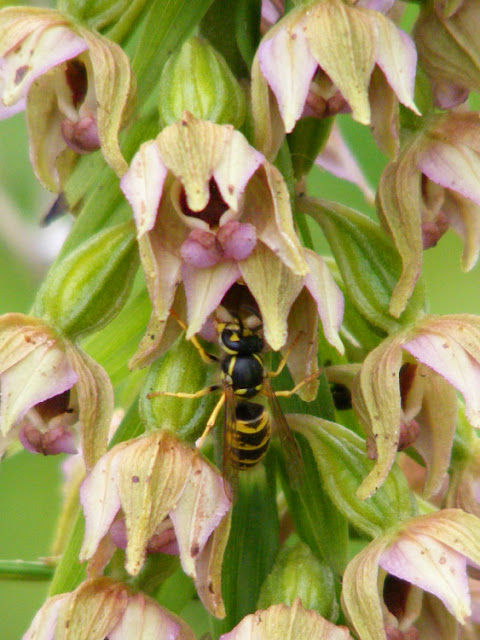Epipactis spp orchids, often known as Helleborines in English, are a genus that includes some species that produce narcotic nectar. The labellum, or lower petal, is cup shaped at the base, pinched in at the front to form an attractive landing pad for pollinators. The cup shaped base holds a lot of nectar. The nectar is mostly sugars, but can also contain yeasts and bacteria which cause the nectar to ferment and produce ethanol, resulting in amusing drunken pollinators. So far, not so unusual.
 |
| Broad-leaved Helleborine with eusocial wasp Vespula sp pollinator in our orchard a few years ago. |
But studies in the past few decades have revealed more. Also present in the nectar of certain species are several sorts of narcotic substances, most notably the morphinan oxycodone. These substances cause the pollinating insects to become sluggish and spend much more time in the flowers, thus increasing the likelihood that the orchid pollenia attaches to them and is subsequently transported to another plant, without the insect grooming and removing the pollenia before it can come into contact with another orchid flower and achieve pollination.
 |
| Broad-leaved Helleborine with eusocial wasp Vespula sp pollinator in our orchard a few years ago. |
Broad-leaved Helleborine Epipactis helleborine (Fr. épipactis à larges feuilles) is one of these narcotic producing species, normally pollinated by eusocial wasps, which become addicted to the narcotics in the nectar so they visit the orchids again and again.
Further Reading: A paper on the subject by Romanian orchid expert Nora de Angelli [link].

1 comment:
The marvels of nature!
Post a Comment